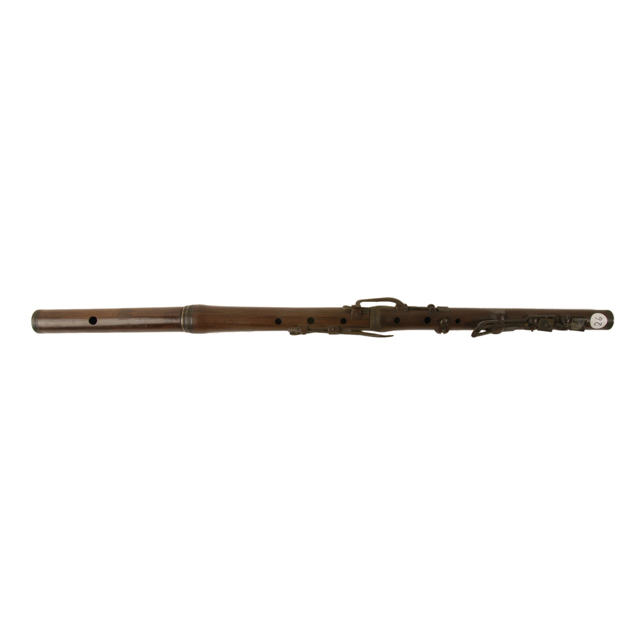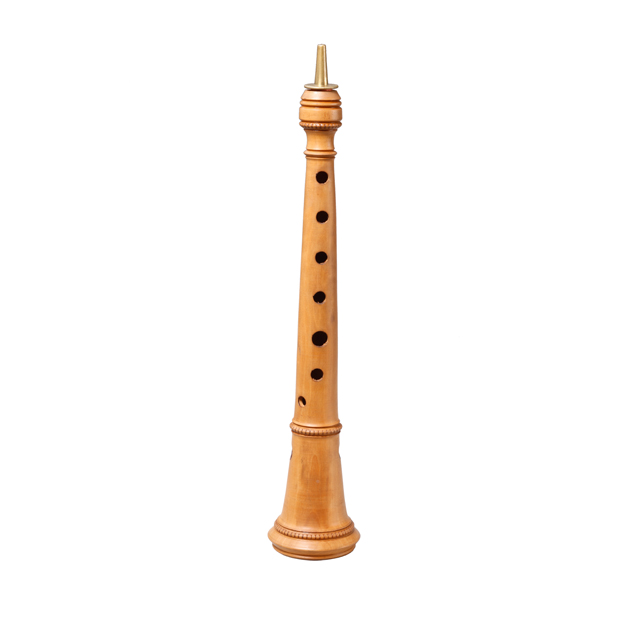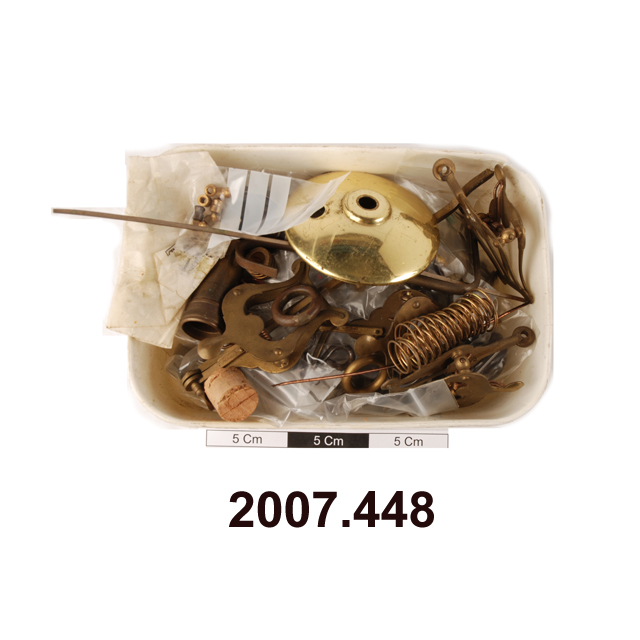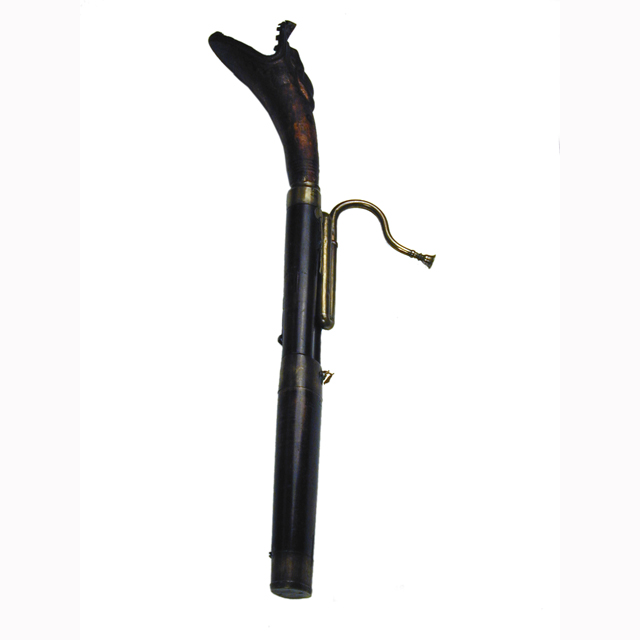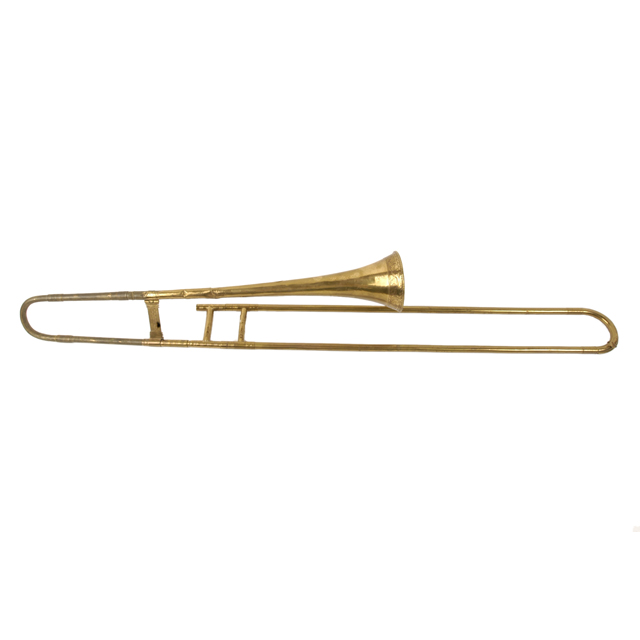
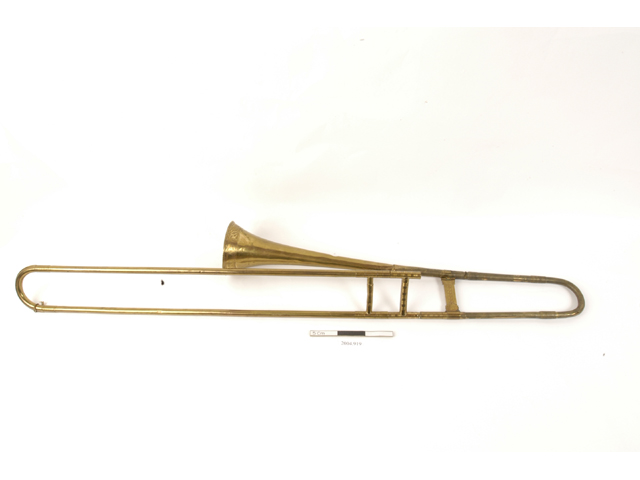

Tenor trombone, sackbut. Brass tubing. Slide without stockings. Fluted garnishes on slide braces. Flat stay with hinge on bell. Expansion begins after the bell bow. Much evidence of repair; may be a composite instrument. Bell garland decorated with floral engravings and stamped: ANTON KERNER/17 IN WIEN 70
The city of Vienna was the site of a remarkable revival for the trombone in the second half of the 18th century. The instrument had been popular all over Europe in the 16th and early 17th centuries, but its perceived lack of sophistication had later fallen foul of Enlightenment aesthetics. Vienna, and to a lesser extent Salzburg, were the only cities in which traditions of trombone making and playing continued. From the 1760s onwards, Austrian music led a revival in the instrument's fortunes. Trombones were made in larger numbers and the instrument returned to the opera house, for instance in Gluck's Orfeo ed Euridice, and to the church with important trombone parts appearing in choral works by Haydn and Mozart. Viennese trombonists rose to the challenges of this repertoire, and a virtuoso tradition developed in the city, as demonstrated by trombone concertos from the period by Johann Albrechtsberger, Michael Haydn, Leopold Mozart, and Georg Wagenseil.



